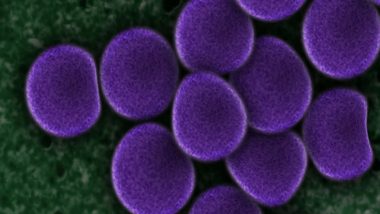Streptococcal toxic shock syndrome (STSS) is a rare but deadly bacterial infection. It is caused by Streptococcus pyogenes, also known as group A streptococcus (GAS). It is also termed a flesh-eating bacteria. STSS can become a life-threatening emergency. This illness has been spreading in Japan. People with STSS need to be treated in a hospital immediately and given antibiotics. The treatment focuses on controlling low blood pressure and preventing organ failure. It often starts with skin infections, surgeries, or childbirth. Many people who carry Streptococcus pyogenes almost never fall ill. But if it gets into the bloodstream, it can cause major issues. The bacteria releases toxins that trigger a strong immune reaction. The bacteria can spread to deep tissues and the bloodstream, leading to shock and possibly death. Sometimes, surgery is needed to remove the infected tissue. Even with treatment, STSS can be fatal. Out of 10 people with STSS, up to 3 might die from the infection. Japan: Deadly Flesh-eating Bacteria Infections on the Rise.
Streptococcal Toxic Shock Syndrome Causes
STSS is caused by an infection with Streptococcus pyogenes. The bacteria produce toxins that cause a strong immune reaction that leads to shock or organ failure. Certain strains of the bacteria that make these toxins are more likely to cause severe infections. STSS is often linked to having cuts or burns, recent surgery, using certain contraceptives, childbirth, or having viral infections like chickenpox or the flu.
Streptococcal Toxic Shock Syndrome Symptoms
The first symptoms of STSS are usually fever and chills, confusion, seizures, headaches, muscle aches, nausea, and vomiting. You must visit the doctor if you show any of these symptoms within the first 24 hours. Within 24 to 48 hours, low blood pressure can develop. This makes the condition much more serious. This can even lead to symptoms like very low blood pressure, a fast heartbeat, rapid breathing, organ failure and even death.
Streptococcal Toxic Shock Syndrome Treatment
Doctors treat STSS with antibiotics. If you have an infection, take prescribed antibiotics. Patients need to be in a hospital, where they receive fluids through a vein and other treatments to manage shock and organ failure. Surgery may also be needed to remove the infected tissue. What is STSS? How to Protect Yourself From STSS? All You Need to Know About the Rare ‘Flesh-Eating Bacteria’ Spreading in Japan.
STSS can be deadly, so it's important to take care of infections, clean wounds properly and cover coughs and sneezes. Wash dishes, utensils, and plates thoroughly, if used by sick people. Wash your hands, body, and hair often with soap and water. Wash the clothes, linens, and towels of anyone with skin infections daily. Avoid sharing any of these items. Once washed and cleaned properly, they are safe for others to use. Follow the necessary precautions to stay safe and keep your loved ones safe too.
(This article is written for an informative purpose and should not be substituted for medical advice. Kindly consult your doctor before trying any tips.)
(The above story first appeared on LatestLY on Jul 09, 2024 01:33 PM IST. For more news and updates on politics, world, sports, entertainment and lifestyle, log on to our website latestly.com).













 Quickly
Quickly





















